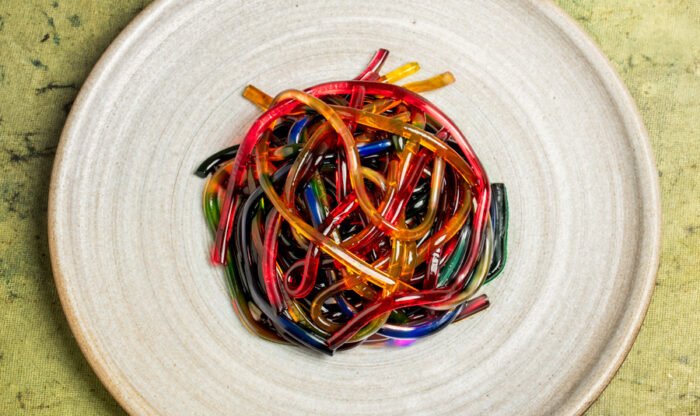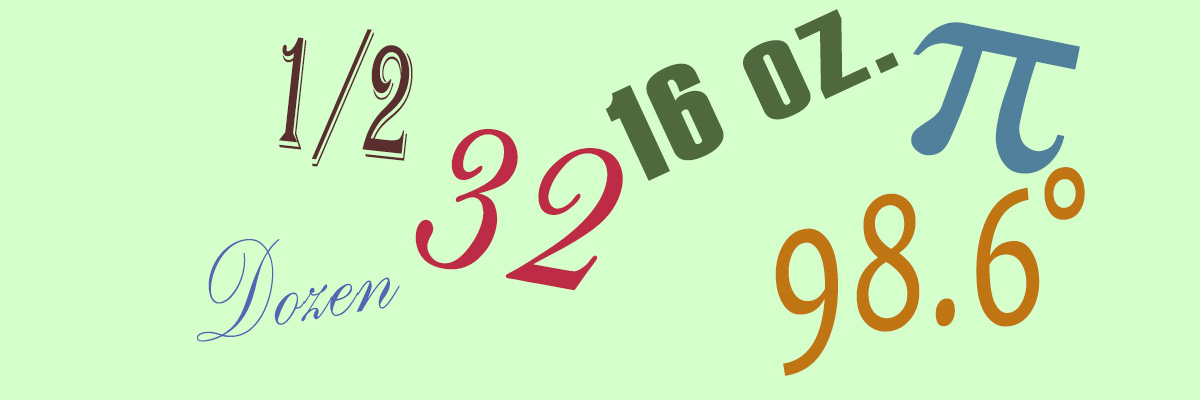These Are the Seven Most Important Numbers to Remember in the Kitchen
One of the more notably knowledgeable people walking around these days is Ken Jennings, a lifelong resident of the greater Seattle area. As encyclopedic as his knowledge might seem, if a Jeopardy category was ever, “Numbers in the Kitchen,” you’d have a decent chance at besting him if you can answer these seven questions.
What is the number ‘three’? The number of teaspoons in a tablespoon. Someday I’ll pen a diatribe about the idiotic system of measurements used for recipes in the United States, but no matter how unwieldy it is, we’re largely stuck with it.

More than with any of its other fractions, conventions, or irrational conversions, knowing that one tablespoon equals three teaspoons is a timesaver in the kitchen. Whether it’s in measuring out quantities or scaling a recipe up or down, this simple conversion is worth internalizing.
What is the number ‘sixteen’? The number of tablespoons in a cup. If you answered, “The number of times the Seahawks jump offside in a typical game,” you responded accurately but don’t get credit because the “Numbers in the Kitchen” category focuses more on the griddle than the gridiron.
Just as with the number of teaspoons in a tablespoon, converting a cupful of anything into 16 tablespoons is a moment’s effort you’ll use thousands of times in your kitchen tenure.
What is the number ‘forty’? The temperature refrigerated foods should be brought to. The FDA’s food safety policies attach mythic importance to chilling foods to 40° Fahrenheit. But there’s no transformative difference between 39° and 41°. Instead, 40 degrees is just a useful guidepost at which food pathogens propagate pretty slowly. They multiply more slowly for every degree foods are further chilled, and more quickly for every degree of increase.
So from a food safety point of view, 40 degrees isn’t quite as good as 39°, while it’s a bit better than 41°. More important is the practical utility of refrigerating foods to 40 degrees (or within a degree or two below that).
Just as with the chamber to a conventional oven, temperatures inside a refrigerator go through cycles.

The refrigerator’s chilling mechanism (typically a compressor) turns on when the temperature drifts above whatever target temperature the refrigerator is set to, and stays on until the inside temperature drops well below that target. Then the compressor switches off and the inside temperature slowly drifts back up (or rapidly rises if the door is opened very much) until the cycle repeats itself.
Not only do the temperatures inside your refrigerator vary because of that cycle, they also vary depending on where in the refrigerator an item is stored. Something kept in the refrigerator door is likely to be several degrees warmer than anything stored near the back. The combination of those variations is why 40 degrees is an ideal target temperature. Notably warmer, and food spoils much more quickly. Notably colder, and some spots inside your refrigerator will cycle in and out of freezing temperatures. Partially freezing, thawing, and refreezing anything is definitely no bueno, so set your refrigerator to hold foods at 40 degrees or a wee bit colder.
What is the number ‘one hundred and forty’? The FDA would have you believe 140 degrees is the upper end of the range where it’s unsafe to hold food. That’s not actually true. With the food pathogens the FDA is focused on, their populations go down – not up – at temperatures above 130°. At 139° those bacteria are getting slaughtered at a pretty rapid clip. But the FDA likes 140° as a benchmark so people will err on the safe side.
The real utility of the number 140 isn’t about food safety. It’s about flour. There’s no better reason for weighing out ingredients instead of measuring them by volume than flour because the same weight of the stuff will always render the same result, but how much flour is captured by a measuring cup varies wildly from one day to the next. There’s simply no way to get the result intended, nor to get a good result consistently, when the chief ingredient (which flour generally is in baking) gets incorporated in dramatically differing amounts.
The ideal weight for a cup of flour is 140 grams. I find that’s always a workable conversion ratio, and it divides evenly by two and four. So when someone’s recipe calls for a cup and a quarter of flour, instead of using two different cup measures you can simply weigh out 175 grams and you’re done. You’ve also got two fewer things to wash.
What is the number ‘two hundred and twelve’? You don’t have to be Ken Jennings to know that water boils at 212°, at least near sea level. On its own, that’s not a terribly useful bit of information since boiling water doesn’t require setting or measuring anything. But simmering happens in liquids between about 185-200°, and poaching is in liquids between about 165-180°. As long as you remember that simmering is a step down from a boil, and poaching is yet another step down the temperature scale, knowing that boiling happens at 212° makes each of the others easy to check without specifically memorizing anything.
What is the number ‘two hundred and forty’? It’s the weight of a cup of water, in grams. It’s also the conversion for a cup of milk, and of stock, and of every other liquid that’s water-based.
Second only to teaspoons-in-a-tablespoon, translating liquid quantities from cups to grams is the most useful conversion in the kitchen. It’s not worth bothering when the amount is less than a tablespoon or two, but everywhen else, it’s a timesaver.
Science sticklers will tell you that a U.S. measure cup of water is actually 236.5882365 grams, or the same number in milliliters. I’m guessing those folks don’t do a lot of cooking. They certainly aren’t figuring the weight of 1 1/3rd cups of chicken stock in their head.

Using 240 grams per cup makes the calculation easy since 240 evenly divides into 2, 3, 4, and even 16 (for the rare recipe that wants 2 cups plus 3 tablespoons of liquid). That’s why no lesser authority than the United States government requires that liquid measures be disclosed at the rate of 240 grams per cup.
What is the number ‘three hundred and fifty’? It’s the go-to temperature for dry cooking. Most baking and roasting is done in a 350° Fahrenheit oven. Nearly all deep fat frying (the second major medium for dry heat cooking) is done at 350°. Even when a recipe calls for baking at 325° or 375°, if you want to do it in a 350 degree oven you can by just using an oven rack that’s a little closer to the oven floor (for the equivalent of the hotter temperature) or closer to the top (for cooler baking).


Like this Recipe? Leave a Comment.
Your email address will not be published.